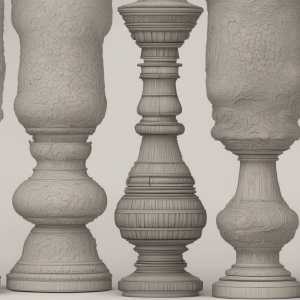Table of Contents:
In our day-to-day discussions related to the wild world of cryptocurrencies and finance, the term "Candlestick Patterns in Trading" is increasingly taking the spotlight. But what exactly are these patterns? And, how can they help us understand and predict the trajectory of cryptocurrency prices? For beginners and pros alike, it’s crucial to have a firm grasp of this concept. In this article, we're going to discuss all things candlestick - the basics, different patterns, and how they can be a game-changer for your investment strategy.
Introduction to Candlestick Patterns
Candlestick Patterns are a form of technical analysis and they've been around since the 18th century. Originated by a Japanese rice trader named Munehisa Homma, they are graphic representations of the price movement of financial instruments such as stocks, commodities, or cryptocurrencies over a certain period. These patterns can vary in length- from one minute to one month or more.
The most apparent part of a candlestick, the 'body', reflects the opening and closing prices during a specific period. Furthermore, slim lines, known as 'wicks' or 'shadows', protrude from the body to illustrate the highest and lowest prices achieved during the same period. Candlesticks can be either bullish (green or white) representing a price increase, or bearish (red or black) indicating a price decrease. The successive formation of these candlesticks culminates in distinctive patterns- the Candlestick Patterns in Trading.
Understanding these patterns and what they symbolize could carry you a long way in your financial journey. They can illustrate market sentiments, hint at potential price reversals and even offer buying or selling signals.
The Birth of Candlestick Patterns
While today's traders recognize candlestick charts as essential tools for market speculation, their lineage goes back a few centuries. The Candlestick Patterns in Trading we recognize in the digital realm have their roots in the feudal ages of Japan. During these historical times, rice was the barometer of wealth, and the ability to predict the rice market was highly coveted.
The credit for developing the first form of candlestick charting goes to Munehisa Homma, a Japanese rice trader. Known as the 'god of markets' in his day, Homma used this unique method to track the prices and trends of the rice market, amassing a vast fortune in the process.
The key breakthrough with Homma's method was the realization that prices weren't merely driven by supply and demand but by traders' emotions and expectations. This concept is still true today and forms the basis of modern technical analysis, with Candlestick Patterns at its core.
Pros and Cons of Candlestick Patterns in Decoding Price Movements
| Pros | Cons |
|---|---|
| Visual representation of price movement | May lead to over-analysis |
| Can signal potential reversals | Not always 100% accurate |
| Useful for short term predictions | Reliability can vary with market volatility |
| Easily used with other technical analysis methods | Requires considerable experience to interpret correctly |
Understanding Basic Candlestick Patterns

The myriad of Candlestick Patterns in Trading can be overwhelming for beginners, but you don't need to memorize them all to start. Here, we'll discuss some of the fundamental and most frequently encountered patterns.
Doji: A Doji candlestick is formed when a security's open and close prices are virtually the same. It signifies indecision in the marketplace. The pattern generally appears at market bottoms and can provide a signal for a bullish (upward) turning point.
Hammer: This pattern has a small body and a long lower wick. It appears when a security moves significantly lower after the open, then rallies to close near the opening prices. This pattern suggests that the market is attempting to determine a bottom, indicating a bullish reversal.
Shooting Star: The shooting star is a bearish candlestick pattern that consists of three bars, with the middle bar surpassing the other bars in terms of high prices. It predicts a price drop.
Bullish Engulfing: As the name suggests, this pattern occurs when a small bearish candle is engulfed by a large bullish candle. It indicates a possible turnaround and bullish reversal.
These are just a few of the Candlestick Patterns you'll encounter in trading. Understanding these patterns is a proactive step towards predicting market trends and making informed trading decisions.
Leveraging Candlestick Patterns in Trading
Once you get the hang of identifying Candlestick Patterns, the next step is using them to your advantage in trading. Implementing these patterns can help you make more informed investment decisions, allowing you to capitalize on price movements, rather than be caught off guard by them.
Remember, Candlestick Patterns are not foolproof, no pattern will be accurate 100% of the time. However, they can provide a strong suggestion of probable price motions. Balance your reliance on Candlestick Patterns with other forms of analysis such as fundamental analysis or even other technical analysis tools to formulate a well-rounded approach.
The key to successfully leveraging Candlestick Patterns lies in persistence and practice. Observing the formation of these patterns over a period of time can help you perceive their relevance and reliability in different contexts. With time, you may even start to recognize distinct features that specifically pertain to the financial markets you're trading in, thereby strengthening your trading strategy even further.
The beauty of trading with Candlestick Patterns is the universality they offer. Whether you're trading Forex, stocks or even cryptocurrencies, these patterns can provide invaluable insights, helping to navigate the often choppy financial waters and assisting you in making better decisions for your investment portfolio.
Identifying Key Candlestick Patterns

Moving beyond the basics, there are several key candlestick patterns that you can learn to identify in the charts. Recognizing these patterns can provide valuable insights into potential market movements and can serve as triggers for trade execution. Let's take a closer look at some of these key patterns.
Gravestone Doji: This pattern occurs when the open, low, and close prices are the same, and the pattern has a long upper shadow. This pattern often signifies a topping action, suggesting that it might be time to consider selling or at least tightening one's stops.
Dragonfly Doji: The direct opposite of a Gravestone Doji, this pattern shows when the open, high, and close prices are the same with a long lower shadow. This is often an indication of a bottoming action and could suggest a buying opportunity.
Dark Cloud Cover: This pattern occurs after an upward trend, with a bearish candle that opens higher than the previous day's close but then closes below the midpoint of the prior candle. This can indicate a potential bearish reversal.
Piercing Line: This is a two-candle pattern that occurs after a downward trend. The first candle is bearish, followed by a bullish candle that opens lower than the previous day's close but closes above the midpoint of the prior candle's body, suggesting potential upward reversal.
In the world of financial trading, these Candlestick Patterns amongst others play an invaluable role in informing buying and selling decisions. By learning how to identify these key patterns, traders develop the ability to forecast potential price movements thereby enhancing their trading strategies.
Effects of Candlestick Patterns on Price Movements
Candlestick Patterns in Trading play a significant role in price movements. These patterns give traders an understanding of market sentiment and can help predict future price movements. Essentially, each candlestick pattern provides a snapshot of the proponents of a specific period - the buyers and sellers. Their collective moves and respective strengths are distilled into these patterns that we study.
For instance, the appearance of a bullish engulfing pattern at the end of a downtrend illustrates that buyers have overcome the sellers, potentially leading to a price rise. On the flip side, a shooting star pattern during an uptrend can suggest that sellers are gaining an upper hand, hinting at possible price decline.
This insight into the dynamic balance of power between buyers and sellers makes candlestick patterns a critical tool in the trader's arsenal. They offer a chance to anticipate and respond to market shifts before they fully materialize, providing traders a valuable edge.
It's noteworthy that while candlestick patterns can illuminate potential price movements, they don't offer any guarantees. Market conditions are influenced by a plethora of factors, and candlestick patterns should be used in conjunction with other trading indicators and strategies for effective decision-making.
Practical Examples of Candlestick Patterns

Learning about Candlestick Patterns in theory is one thing, but seeing them in action is another. Let’s break down some real-life examples to help visualize these patterns in trading situations.
Bearish Harami: Imagine you observe a large green candlestick that is followed by a smaller red or green one located within the prior bar’s vertical range. This is a bearish harami and often indicates a potential trend reversal - from bullish to bearish.
Bullish Harami: The bullish harami is the opposite of the bearish harami. It appears when a large red candlestick is followed by a smaller candlestick whose body is located within the upper range of the larger candle's body. This pattern predicts a bullish reversal - the price is likely to rise.
Three Black Crows: If you see three consecutive long-bodied candlesticks with downward price progression, you've identified the "Three Black Crows". This pattern signifies strength in a bear market.
Three White Soldiers: The Three White Soldiers pattern is a bullish reversal signal. They appear as three consecutive long green candles with short shadows, each opening within the previous candle's real body and closing at a higher price.
By looking at these practical examples, you can understand how Candlestick Patterns serve as a visual representation of market transitions. Keep practicing and honing your skills with mock trading environments to become proficient in recognizing and utilizing these patterns.
Conclusion: The Power of Candlestick Patterns in Trading
In the fast-paced world of crypto trading, understanding Candlestick Patterns can be your key to unlock potential profits. Nevertheless, like all trading tools, they are not a surefire guarantee of success, but rather, a means to give you an edge in deciphering market movements. The power of Candlestick Patterns lies in their ability to visualize complex market information in an easily understandable form, revealing sentiments and possible price reversals.
Candlestick Patterns have withstood the test of time and still remain a valuable asset in any trader’s arsenal. They offer a deep understanding of market psychology, providing insights into the balance between buyers and sellers. By mastering Candlestick Patterns, you can ultimately enhance your trading strategies, making more informed and profitable trading decisions.
So, buckle up and embark on the journey of plotting and decoding Candlestick Patterns – the Holy Grail of technical price analysis!
Experiences and Opinions
Nutzer erkennen schnell die Bedeutung von candlestick patterns im Handel. Viele finden, dass diese Muster helfen, Markttrends zu verstehen. Ein häufiger Kommentar in Foren ist, dass die Visualisierung von Preistrends durch Candlesticks einfacher zu interpretieren ist als durch andere Charttypen.
Ein typisches Beispiel ist die Verwendung von bullish und bearish patterns. Viele Anwender berichten, dass sie durch das Erkennen dieser Muster bessere Kauf- oder Verkaufsentscheidungen treffen. Ein Benutzer auf einer Handelsplattform erklärte, dass er durch das Erlernen von candlestick patterns seine Trefferquote beim Trading erheblich steigern konnte.
Die App "Candlestick Patterns: Learn" wird oft als nützlich beschrieben. Nutzer schätzen die Möglichkeit, verschiedene Muster zu lernen und anzuwenden. Einige äußern jedoch Bedenken wegen der Benutzeroberfläche. Sie wünschen sich eine bessere Organisation der Muster. Ein Nutzer merkte an, dass es frustrierend sei, wenn beim Öffnen der App jedes Mal eine zufällige Auswahl von Mustern angezeigt wird. Ein klar strukturiertes Menü wäre hilfreich.
Ein weiteres Problem sind inkonsistente Informationen. Einige Muster, wie das „abandoned baby“, funktionieren nicht korrekt in der App. Anwender berichten, dass sie bei der Nutzung auf falsche Trendanzeigen stoßen. Diese Fehler können zu falschen Handelsentscheidungen führen.
In Büchern über candlestick patterns finden sich oft detaillierte Erklärungen und Beispiele. Diese Ressourcen bieten tiefergehende Einsichten. Nutzer empfehlen, sich zusätzlich mit diesen Materialien auseinanderzusetzen, um die Theorie hinter den Mustern besser zu verstehen.
Ein weiterer Aspekt ist die Kombination von candlestick analysis mit anderen technischen Indikatoren. Anwender berichten, dass diese Kombination oft zu besseren Handelsentscheidungen führt. Sie empfehlen, die Candlestick-Muster in Verbindung mit Trendlinien und Volumenanalysen zu nutzen. Diese integrierte Herangehensweise kann helfen, die Marktpsychologie besser zu verstehen.
Zusammenfassend lässt sich sagen, dass candlestick patterns ein wertvolles Werkzeug für Trader darstellen. Die Meinungen über Apps und Bücher sind jedoch geteilt. Viele Nutzer wünschen sich Verbesserungen in der Benutzeroberfläche der Lern-Apps, während andere die theoretischen Grundlagen als wichtig erachten. In der Praxis ist die Anwendung der Muster entscheidend. Ein klarer und strukturierter Zugang zu diesen Informationen könnte die Nutzererfahrung erheblich verbessern.
Understanding Candlestick Patterns in Price Movements: FAQs
What is a candlestick pattern?
Candlestick patterns are specific patterns that can be found in price charts of financially traded assets. They are used by traders to understand and predict future price movements.
How are candlestick patterns formed?
Candlestick patterns are formed by the price movements of an asset over a specific timeframe. Each 'candle' depicts the asset's opening, closing, high, and low prices within the chosen period.
What are the different types of candlestick patterns?
There are numerous candlestick patterns including simple patterns like Doji and Marubozu, and complex patterns like Three Black Crows and Evening Star.
How to interpret candlestick patterns?
The interpretation of candlestick patterns depends on their placement within a larger price trend. Additionally, each pattern has its own interpretation in terms of expected future price movement.
Are candlestick patterns reliable?
Candlestick patterns are not foolproof and should be used alongside other indicators and technical analysis tools for a more complete picture of the market.











